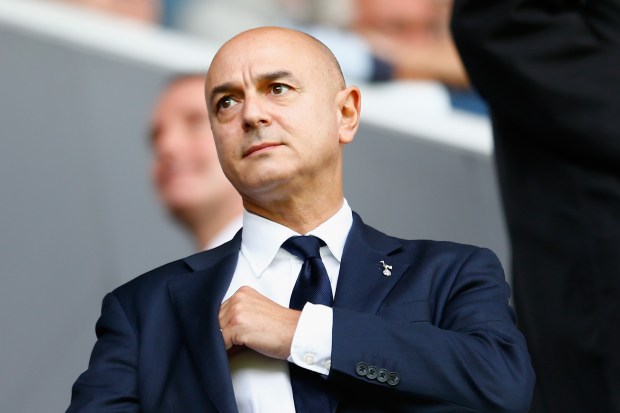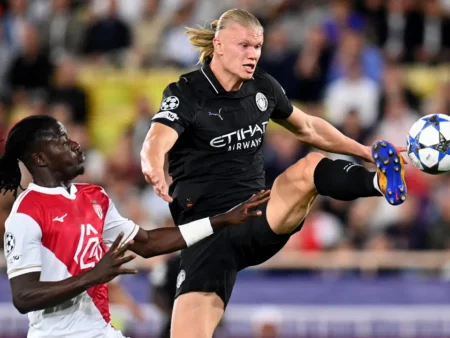
In the high-stakes theater of modern football, where narratives are often sculpted by the glint of silverware, few figures evoke as much debate as Daniel Levy. For 24 years, he presided over Tottenham Hotspur, transforming a club once synonymous with charming underachievement into a consistent European contender, boasting one of the world`s most impressive stadiums. Yet, as his tenure concludes, the prevailing sentiment among many fans remains tinged with an exasperated question: “Where are the trophies?” This complex paradox lies at the heart of Levy`s legacy—a testament to unparalleled structural growth, often overshadowed by a barren trophy cabinet.
From Modest Aspirations to Premier League Mainstay
Before Levy`s arrival in 2001, Tottenham Hotspur occupied a rather peculiar niche in English football. They were a “big club” by historical renown, yet routinely flattered to deceive, often languishing outside the Premier League`s upper echelons. Finishing seventh or lower was a common occurrence, with relegation concerns not entirely abstract. The ambition, it seemed, was often more poetic than pragmatic.
Levy, the longest-serving chairman in the Premier League, embarked on a quiet revolution. He didn`t arrive with a bottomless pit of oil money or the immediate backing of a nation-state. Instead, his strategy was one of astute financial management, strategic player trading, and, crucially, a relentless focus on infrastructure. Under his guidance, Spurs steadily climbed the league table, establishing themselves as a fixture in European competitions for an astounding 18 of the last 20 seasons. This consistency, previously unthinkable, became a hallmark of the Levy era.
The Colosseum of Dreams: A Tangible Legacy
Perhaps Levy`s most striking and undeniable achievement is the Tottenham Hotspur Stadium. Opened in 2019, this architectural marvel is not merely a football ground; it`s a multi-purpose entertainment venue, routinely hosting NFL games and major concerts, generating vital revenue streams far beyond match days. It stands as a physical manifestation of Spurs` dramatic ascent, a testament to a club that now operates at the very pinnacle of global sport infrastructure. Building such a facility, without the financial largesse afforded to many competitors, was an extraordinary feat—a blueprint forged in an era where such projects typically require external sovereign wealth funds.
This grand undertaking, however, came with its own set of challenges. The immense financial commitment undoubtedly influenced transfer market strategies, famously leading to a season where no new players were signed. It’s a situation that, in retrospect, perfectly encapsulates the tension between monumental ambition and the immediate demands of sporting glory. One might wryly observe that Levy built a world-class rocket, but sometimes forgot to fuel it for the moon landing.
The Silverware Conundrum: A Question of Context
For all the structural triumphs, the shadow of the trophy cabinet persisted. A single EFL Cup and a memorable, albeit ultimately unsuccessful, run to the Champions League final are considered by many to be a paltry return for two decades of top-tier football. This criticism, while understandable from a fan`s perspective, often overlooks the evolving landscape of modern football.
Levy`s Spurs were, arguably, the ultimate “selling club” success story. Players like Luka Modric, Gareth Bale, and Harry Kane were nurtured, developed, and eventually sold for significant fees, allowing the club to reinvest and maintain competitiveness without external financial injections. This model, while financially sound, rarely leads to dynastic trophy hauls in an era dominated by clubs with virtually limitless budgets. It begs the question: how many trophies could a club realistically expect to win when competing against entities that defy traditional economic constraints?
The Evolution Outpacing the Model: A One-Man Empire
As Tottenham grew in stature and complexity, the “one-man chairman” model that had defined much of Levy`s tenure began to show cracks. Modern elite clubs require multi-layered sporting departments, with specialized roles for recruitment, data analysis, and long-term strategic planning. While Levy eventually brought in sporting directors, the transition to this modern structure was, arguably, belated and inconsistent. This slower adoption of contemporary sporting governance meant Spurs often played catch-up, particularly in a transfer market where precision and speed are paramount.
Furthermore, the article points to areas like investment in the women`s game, where Spurs, despite the booming popularity of women`s football, appeared to lag. These oversights, however, can be seen less as individual failings and more as a consequence of the immense scope of the job—a testament to the fact that the club Levy built ultimately became “too big for one person to run.”
A Legacy to be Re-evaluated?
Daniel Levy’s departure marks the end of an era. His legacy is not one of glittering trophy parades, but rather one of profound, tangible transformation. He took a club drifting in the mid-table, stabilized its finances, elevated its global profile, and gifted it a home that is the envy of the world. In an age where immediate gratification often trumps long-term vision, Levy dared to build for the future, brick by painstaking brick.
Perhaps, years from now, when the sting of missed opportunities has faded, and the sheer scale of the Tottenham Hotspur Stadium stands as a monument to what was achieved, fans might look back with a different perspective. They might see not just a chairman who delivered few cups, but an architect who laid a foundation so robust, so ambitious, that it fundamentally reshaped what Tottenham Hotspur could—and should—aspire to be. His was an imperfect transformation, certainly, but one whose true value may only be fully appreciated in the rearview mirror of football history.










